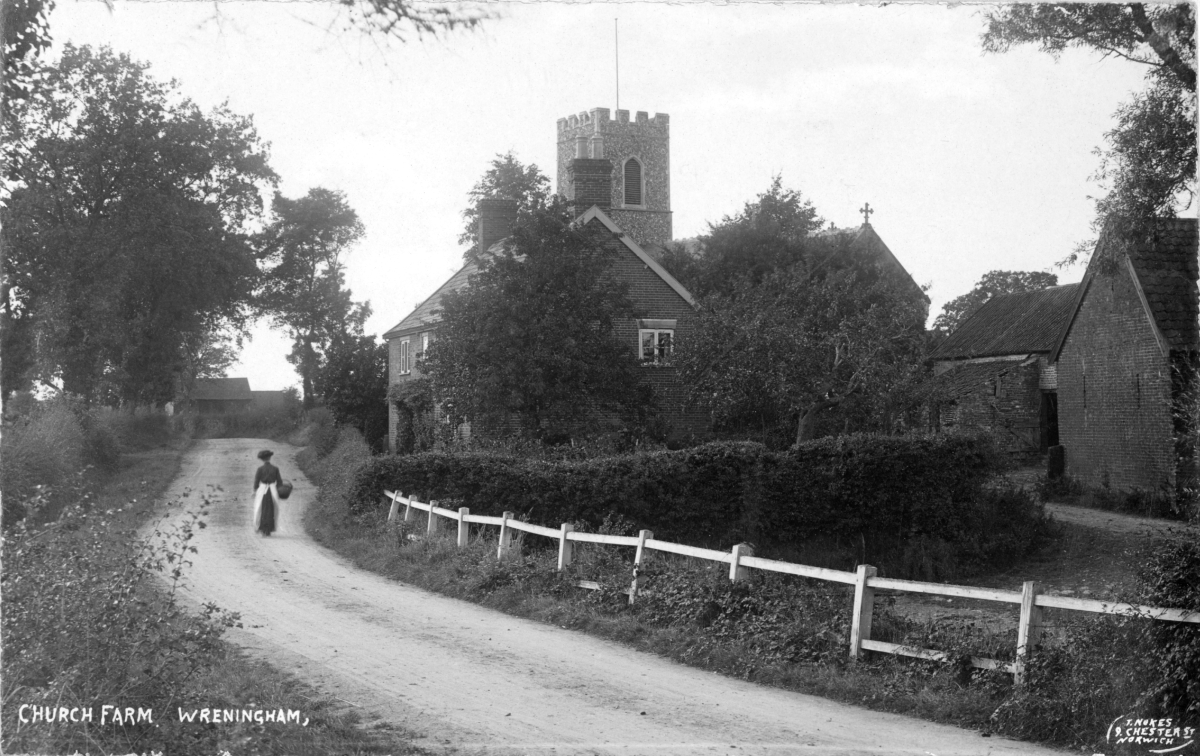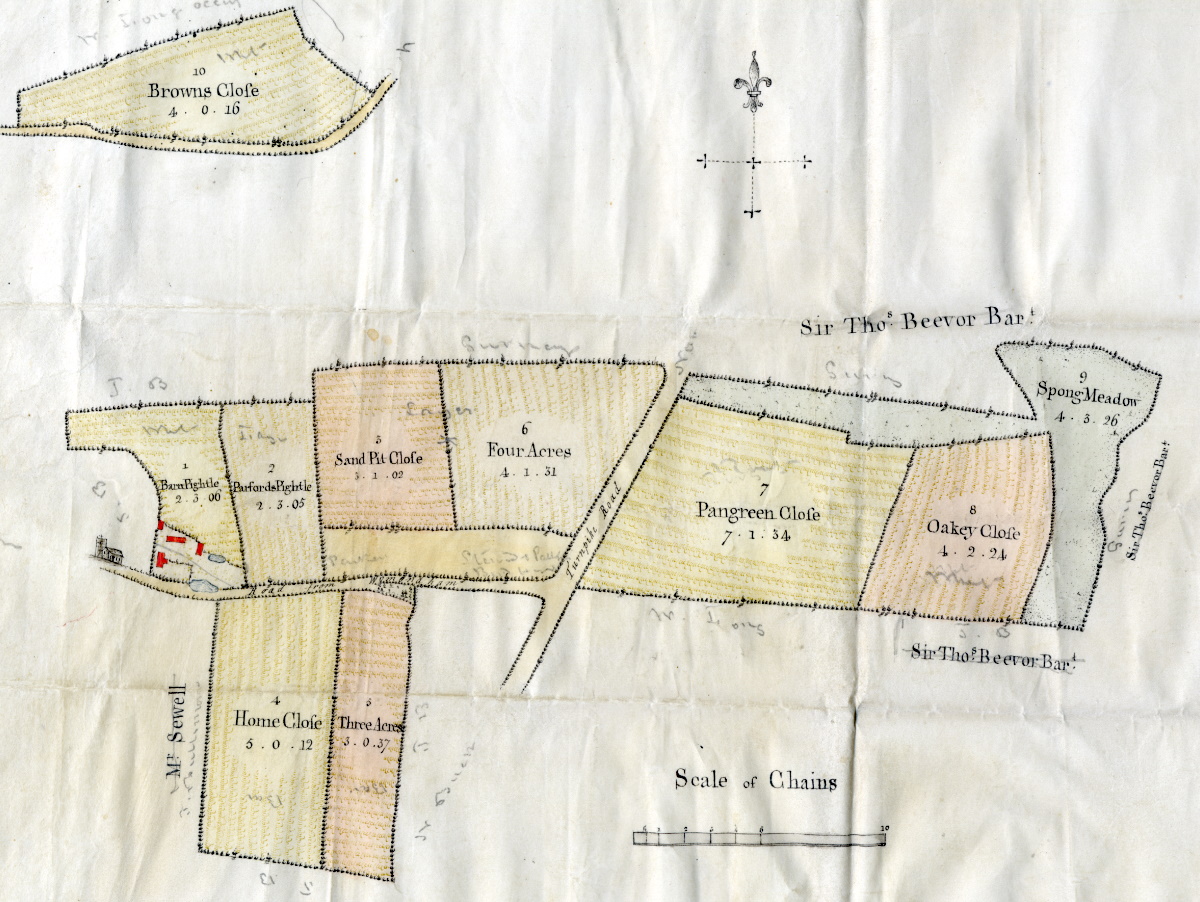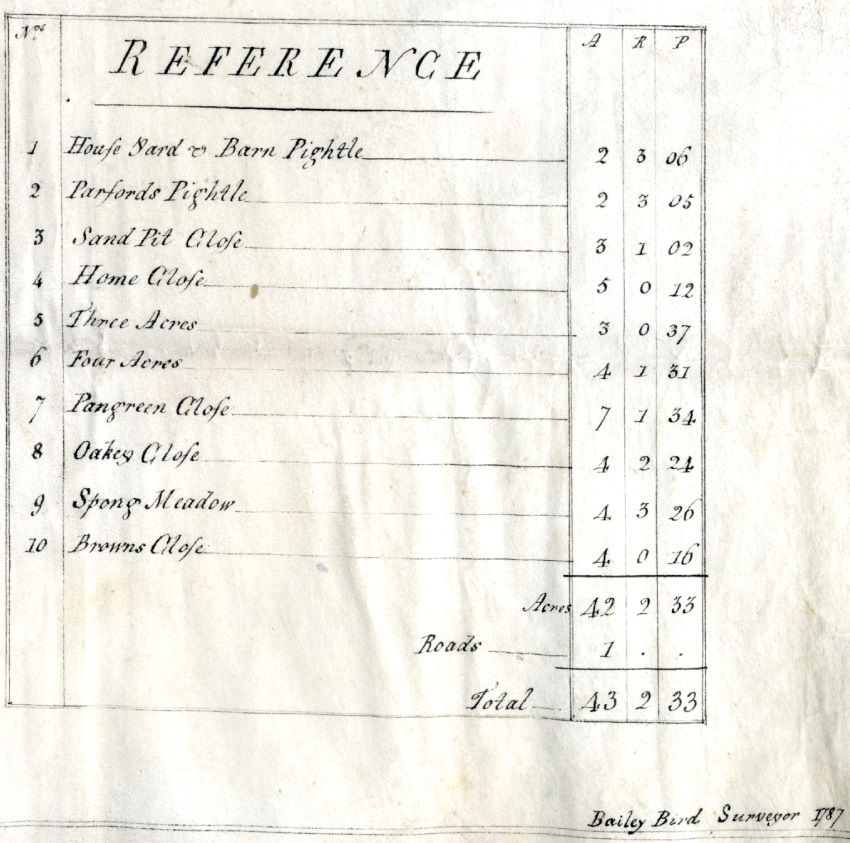

Modern times
A combine harvester had replaced regular threshing machine visits by about 1960. The pig operation ceased during the 1970s and the dairy business closed in 1993. Until then, egg and milk deliveries had been made in the village by bicycle.
History
The earliest evidence we have seen relating to the history of Church Farm is the above map, dated 1787, which shows the field layout at that time. It describes Church Farm as about 42 acres comprising 10 fields and a collection of farm buildings. (The surveyor added 1 acre to account for the area of the public road.)
One of the fields is separate from the remainder of the farm, being situated on the (current day) Hethel Road.
The 1787 farm is stated to be the property of Edward Atthill and the map’s surveyor is given as Bailey Bird.

Farm owner Edward Atthill appears to have been the son of John Atthill (born c1724) from Caston, Norfolk. It is believed Edward was born c1765 and lived in Great Yarmouth – so was probably in his early 20s when the map was drawn. (A young man of means!) He married Mary Turner and they had a son: Lombe Atthill – born c1788 (the year after the map’s date!), who became a cleric. Edward pre-deceased Mary and she inherited Church Farm. She died in 1826 and the farm ownership then passed to their son, Rev Lombe Atthill, who lived in Halesworth.
The Rev Lombe Atthill died on 20th March 1864 (still in Halesworth) leaving everything to his wife: Harriet (born Harriet Pizzey – might there by a family connection to Violet Peel born with the surname: Pizzey?). Harriet died on 25th May 1891, at the age of 80.
In October 1891, the 42 acre Church Farm was purchased from James Turner, the executor of Harriett Atthill’s estate, by Martha Bullimore (the first wife of John Bullimore, at Hill House Farm, Wreningham) for the sum of £895.
We already know that Martha Bullimore (born Martha Thurston) had inherited a substantial sum of money from Maria Burton in 1870 having worked for Maria Burton alongside John Bullimore at Burton’s farm (before John & Martha married) – which is probably how Martha had her own “means” to buy Church Farm.
Martha Bullimore died on 25th September 1896 and bequeathed Church Farm to her niece, Elizabeth Long (born Elizabeth Thurston).
None of these original owners would have been undertaking any of the actual farming; that would have been down to a succession of tenants. Reliably picking out a list of tenant farmers can occasionally be difficult; we are often dependent on finding the information in 3rd part documents. However, from the Tithe Tables and associated Tithe Map of 1838, we can see that the Rev Lombe Atthill’s tenant at Church Farm was John Huggins.
The Highways Rate Book of 1886 shows the tenant at Church Farm to be Eliza Bush. The 1890 and 1892 County Directories both name Daniel and his sister Miss Mary Ann Bush as tenants and this is supported by hand-written detail, from 1896, in the Church Farm time capsule found in recent times. The 1904 County Directory names John Parfitt as the farmer. To that list, Basil Day’s book has added: Noah Bush (1868-1875), Elijah Ireland (1896-1900) and Charles Brown (1908-1937). Collectively, we seem to have a list Church Farm tenants spanning 100 years!
In 1930, a strip of the farm’s land along the north side of Church Road was sold to Henstead Rural District Council for the construction of a group of houses . These houses, built on an area once described as “3 roods, or thereabouts”, are marked with the date of their construction.
